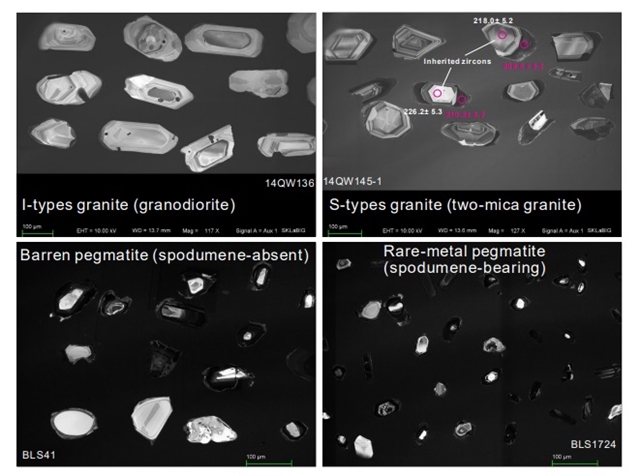
中国科学院大学唐功建团队的最新研究报道了超大陆组合驱动的大型稀有金属伟晶岩矿床的形成。该项研究成果发表在2023年7月12日出版的《地质学》上。
东亚大多数稀有金属伟晶岩形成于在三叠纪晚期,约ca. 220-200Ma ,通常与S 型花岗岩有成因联系。全岩和锆石 Li 和Cs 含量表明,沉积岩为伟晶岩矿床提供了丰富的稀有金属来源,长期的化学风化对稀有金属的富集起着关键作用。这些在东亚广泛分布的矿床的形成与泛古陆组装过程中,沿着超大陆边缘的板块退缩引起的岩石圈伸展有关。
据介绍,三叠纪稀有金属伟晶岩矿床广泛分布于东亚。例如,西藏北部的西昆仑和松潘-甘孜带以及中亚造山带中心的阿尔泰带。然而,稀有金属的富集过程和矿床形成机制仍然是个谜。
附:英文原文
Title: Large-scale rare-metal pegmatite deposit formation driven by supercontinent assembly
Author: Gong-Jian Tang, Derek. A. Wyman, Qiang Wang, Wei Dan, Lin Ma, Ya-Nan Yang
Issue&Volume: 2023-07-12
Abstract: Triassic rare-metal pegmatite deposits are widespread in East Asia; e.g., the western Kunlun and Songpan-Ganze belt in northern Tibet and the Altai belt in the heart of the Central Asian Orogenic Belt. However, rare-metal enrichment processes and deposit formation mechanisms are enigmatic. Most rare-metal pegmatites in East Asia formed at ca. 220–200 Ma in the Late Triassic and are genetically related to S-type granites. Whole-rock and zircon Li and Cs contents indicate that sedimentary rocks represent a fertile rare-metal source for the pegmatite deposits and that long-term chemical weathering plays a key role in the enrichment of rare metals. The formation of these widespread deposits in East Asia was associated with lithospheric extension induced by slab retreat along the periphery of the supercontinent during Pangea assembly.
DOI: 10.1130/G51454.1
Geology:《地质学》,创刊于1973年。隶属于美国地质学会,最新IF:6.324
官方网址:https://pubs.geoscienceworld.org/geology
投稿链接:https://geology.msubmit.net/cgi-bin/main.plex
